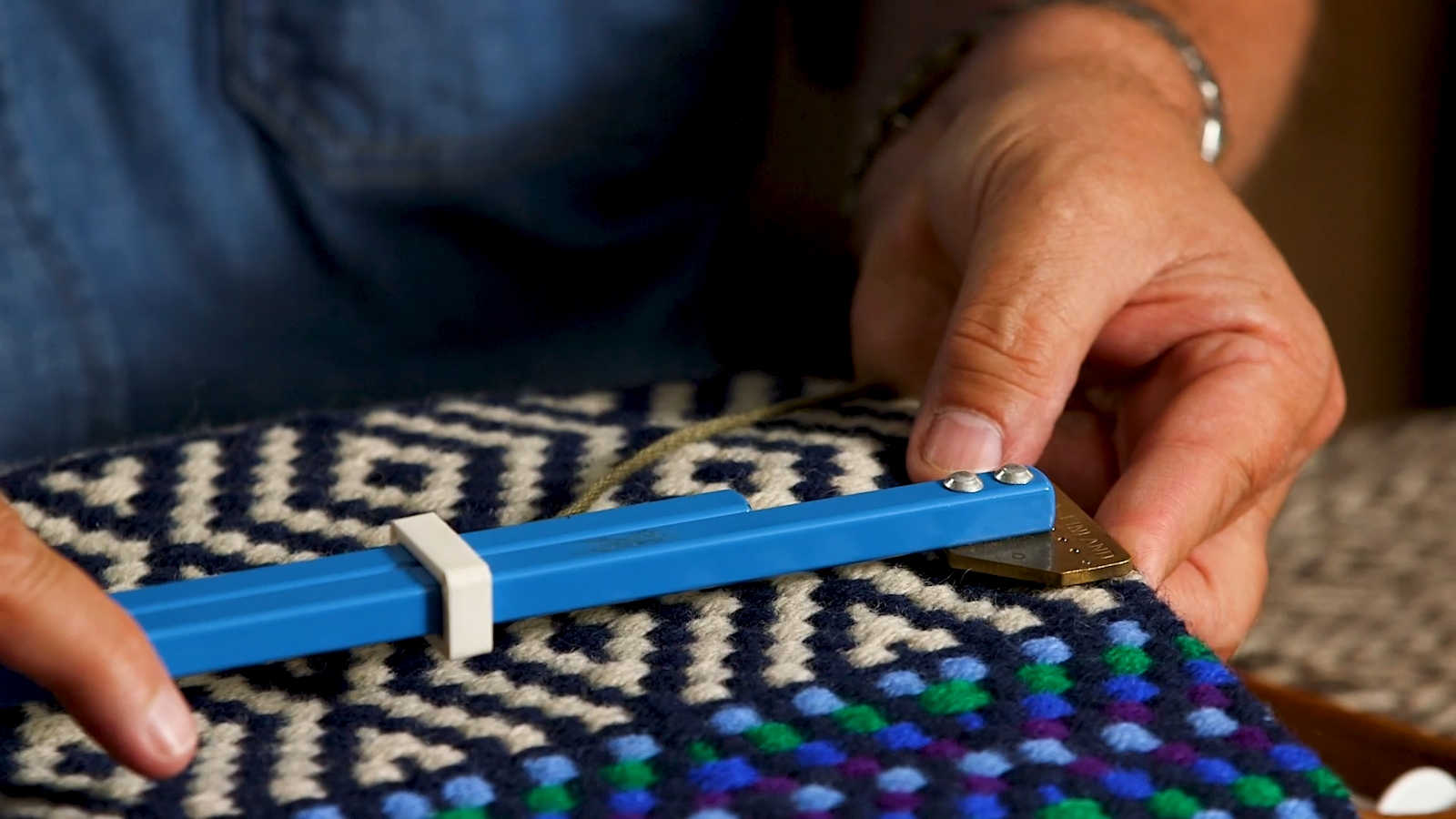Getting tidy selvedges when weaving boundweave can be tricky, but with a little know-how you can keep them clean. In his Notes from the Fell from the March/April 2017 issue of Handwoven, Tom Knisely shares his tips for getting the best boundweave selvedges. ~Christina
Whenever I teach a class on boundweave or krokbragd (a Scandinavian boundweave pattern), there are a few students who struggle with the technique—not because it’s difficult to understand or to weave but because these weft-faced weaves tend to produce an untidy-looking selvedge. Weavers who pride themselves on perfect selvedges will start to crumble at the way these edges look, but it’s not a matter of weaverly skill. Boundweave selvedges require a totally different mind-set and an acquired level of acceptance. “Relax and breathe. Become one with your rug,” I tell my students.
Let me explain the challenge. Boundweave patterns, including krokbragd, are weft-faced twills. With many twill patterns, the weft thread sometime catches at the edge and sometimes not. I am sure all of you experienced this when you first learned to weave. Then you discovered floating selvedges, so your weft threads would always catch at the edges, and all was well with the world. And so it is with boundweave and krokbragd. I like using floating selvedges sleyed in the dents to either side of my warp. I weight them separately and have them hang off the back of the loom under tension. If you prefer to beam the floating selvedges with the rest of the warp, you can simply put an S-hook on those threads, slide the hook over the back beam, and hang a heavy weight from the hook. With this method, you don’t need to remember to readjust the weights as you advance the warp, but either system works fine.
 Tom’s boundweave pattern. Each row takes three picks to complete, one of each color. Also notice the floating selvedge at the left edge. In this project, Tom is using his warp threads doubled but triples the floating selvedge thread. Photos by Tom Knisely unless noted otherwise
Tom’s boundweave pattern. Each row takes three picks to complete, one of each color. Also notice the floating selvedge at the left edge. In this project, Tom is using his warp threads doubled but triples the floating selvedge thread. Photos by Tom Knisely unless noted otherwise

